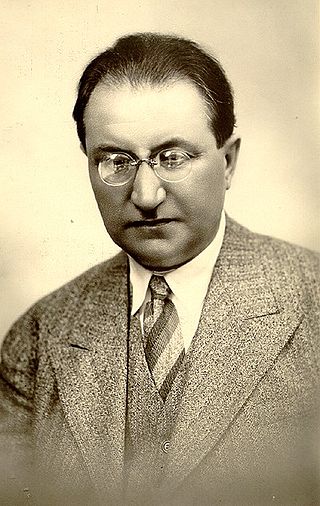This article has multiple issues. Please help improve it or discuss these issues on the talk page . (Learn how and when to remove these messages)
|
Estonian Poetry is poetry written in the Estonian language or in Estonia.
This article has multiple issues. Please help improve it or discuss these issues on the talk page . (Learn how and when to remove these messages)
|
Estonian Poetry is poetry written in the Estonian language or in Estonia.

The earliest known poetry written in Estonia was in the Latin language. The first poems written in the Estonian language came from Baltic German estophiles. The development of Estonian poetry occurred during the time of the Noor-Eesti ("Young Estonia") movement. [1]
Kristjan Jaak Peterson (1801–1822) is commonly regarded as one of the founders of Estonian poetry. [2] Following him, the heyday of national romantic poetry took over as the most prominent examples of Estonian poetry led by poets like Lydia Koidula. [3]

Estonian is a Finnic language of the Uralic family. Estonian is the official language of Estonia. It is written in the Latin script and is the first language of the majority of the country's population; it is also an official language of the European Union. Estonian is spoken natively by about 1.1 million people: 922,000 people in Estonia and 160,000 elsewhere.
Estonian orthography is the system used for writing the Estonian language and is based on the Latin alphabet. The Estonian orthography is generally guided by phonemic principles, with each grapheme corresponding to one phoneme.

Aino Krohn Kallas was a Finnish-Estonian author. Her novellas are considered to be prominent pieces of Finnish literature.
Juhan Viiding, also known under the pseudonym of Jüri Üdi was an Estonian poet and actor.

Bowes & Bowes was a bookselling and publishing company based in Cambridge, England.

Manchester University Press is the university press of the University of Manchester, England and a publisher of academic books and journals. Manchester University Press has developed into an international publisher. It maintains its links with the University.

Tõnu Õnnepalu, also known by the pen names Emil Tode and Anton Nigov, is an Estonian poet, author and translator.
Ilmar Laaban, was an Estonian poet and literary critic.

Estonian literature is literature written in the Estonian language

Villem Grünthal-Ridala, born Wilhelm Grünthal was an Estonian poet, translator, linguist and folklorist.

Karl Martin Sinijärv is an Estonian journalist and poet.

Bernard Kangro was an Estonian writer and poet.

Maarja Kangro is an Estonian poet, short story writer, novelist, essayist, nonfiction writer and librettist.

Estonia, officially the Republic of Estonia, is a country by the Baltic Sea in Northern Europe. It is bordered to the north by the Gulf of Finland across from Finland, to the west by the sea across from Sweden, to the south by Latvia, and to the east by Lake Peipus and Russia. The territory of Estonia consists of the mainland, the larger islands of Saaremaa and Hiiumaa, and over 2,300 other islands and islets on the east coast of the Baltic Sea, covering a total area of 45,335 square kilometres (17,504 sq mi). Tallinn and Tartu are the two largest urban areas. The Estonian language is the official language and the first language of the majority of the population of 1.4 million.

Aapo Ilves is an Estonian poet, writer, playwright, artist and musician. He writes in Estonian, Võro and Seto languages. Ilves has also written song lyrics for other artists, including several "Hits of the Year" and also Estonian Eurovision entries "Tii" in 2004 and Kuula in 2012.
The Japanese haiku has been adopted in various languages other than Japanese.

Kätlin Kaldmaa is an Estonian freelance writer, poet, translator and literary critic. Since 2010, Kaldmaa is the president of the Estonian PEN. In 2016 she was elected Secretary of the PEN International.

Ellen Niit was an Estonian children's writer, poet and translator. Over her lifetime, she penned more than forty books of both prose and poetry for children. She also wrote a number of collections of prose and poetry for adults. Her works have been translated into eighteen languages.
Veronika Kivisilla is an Estonian poet and literary critic, possibly best known for her publications Kallis kalender (2011), Cantus Firmus (2015), Kuni armastus peale tuleb (2018), and Salutatio (2019).

ABD ehk Luggemise-Ramat Lastele is an Estonian language textbook written by Otto Wilhelm Masing and published in Tartu, Estonia in 1795.